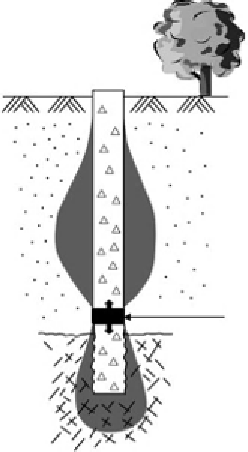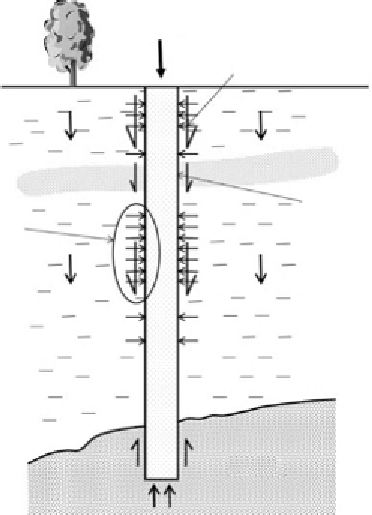Geology Reference
In-Depth Information
Figure 6.11
Pile
test using an
integral jack or set
of jacks. This set-up
allows the end
bearing part of the
pile to be jacked
against the upper
parts (skin friction).
If strain gauges are
built into the pile,
then a good
interpretation can
be made of ground
parameters.
Strain gauges and load
cells included in pile tell
where the load is being
carried (a check on soil and
rock parameters)
Included jack expands,
forcing upper part of pile
against lower part
Rock
socket
Figure 6.12
The
concept of negative
skin friction. Where
the ground around
a pile or group of
piles settles
signi
Building load
Drag down
force on
pile
Soft clay
cantly (cm),
then the ground
will cause a drag
down force on the
pile. At the same
time, the upper
parts of the pile
cannot provide
positive skin
resistance.
Sand
Sand, sandwiched
between consolidating
clay layers also drags
down on pile
Clay
sticks to
pile
Soft clay
Clay consolidates (settles)
under own weight, due to
fill or because of lowering
of water table
Rock
up to 5 cells in a single 3m diameter pile to generate forces of over
30,000 tonnes (Cho
et al
., 2009b). The obvious advantages include the
fact that no reaction is required at the ground surface, but a limitation is
that the forces upwards must be balanced by those downwards, which
would be dif
cult to achieve where the pile is mostly end bearing.


